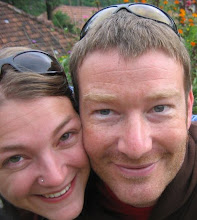 the 4000 year old city of Thebes, the one time capital of the ancient empire. As we expected this area is peppered with temples, obelisks, statues and of course the famous tombs.
the 4000 year old city of Thebes, the one time capital of the ancient empire. As we expected this area is peppered with temples, obelisks, statues and of course the famous tombs.We visited the beautiful mountainous desert landscape that is the Valley of the Kings. Over 60 underground tombs, mainly for the pharaohs, with beautifully carved and painted walls can be found
 here. It's quite a spectacular site, but one which must be stored in the memory of observers as no photography is allowed in any of the tombs. We witnessed one couple being lead out of one tomb by a 'security' guard for flashing. Holding the offending camera, obvioulsy keen to claim his percentage of the heafty fine for such a crime, the guard frog marched them off and were never seen again....
here. It's quite a spectacular site, but one which must be stored in the memory of observers as no photography is allowed in any of the tombs. We witnessed one couple being lead out of one tomb by a 'security' guard for flashing. Holding the offending camera, obvioulsy keen to claim his percentage of the heafty fine for such a crime, the guard frog marched them off and were never seen again....Fearing an extension of her work day, our guide dissauded us from visiting the most famous of the tombs here, the one belonging to Tutankhamun. "It's quite a walk from here, you need another expensive ticket and it's not very good." Thankfully we had seen King Tut's impressive treasure room in the Cairo museam which included photos for the empty tomb.

Like most people we had heard of the pyramids of Giza and of the Valley of the Kings but we hadn't heard of the stunning temple complex of Karnak, only 2km the centre of Luxor. In its prime it was the most important place of worship in Egypt and it main structure the Temple of Amun was considered to be the largest religious building ever build. A marvellous mini sphinx-lined path leads you into the Great Hall a 6000 sq-metre garden of 134
 massive papyrus shaped carved stone pillars, a truely awesome sight. We found this place very difficult to leave, maybe one of the greatest sights we had seen in Egypt.
massive papyrus shaped carved stone pillars, a truely awesome sight. We found this place very difficult to leave, maybe one of the greatest sights we had seen in Egypt.

No comments:
Post a Comment